Looking to visit Girnar Hills? Here’s a quick overview: It’s a sacred site for Jains and Hindus in Junagadh, Gujarat, offering temples, trekking (around 10,000 steps), and a ropeway for easier access. The best time to visit is November to February.
For in-depth information on how to reach Girnar Hills, key attractions, trekking tips, ropeway details, accommodation options, and practical advice to plan your visit, please continue reading this comprehensive guide. You’ll find everything you need to make your trip to this majestic and spiritual destination a success.
Unveiling Girnar Hills: Gujarat’s Sacred Travel Destination
Towering majestically over the plains of Junagadh, Girnar Hills is more than just a mountain range—it is a spiritual sanctuary, an adventure enthusiast’s dream, and an enduring symbol of Gujarat’s cultural heritage. Whether you are a pilgrim seeking solace in sacred temples, an avid trekker looking for an adrenaline-packed journey, or simply a traveler ready to explore nature’s wonders, Girnar Hills has something unique to offer.
In this guide, we will unveil every aspect of Girnar Hills—from its location and breathtaking vistas to the intricate religious significance and practical tips for your visit. Let this comprehensive travel blog be your roadmap as you prepare to experience one of India’s most captivating destinations.
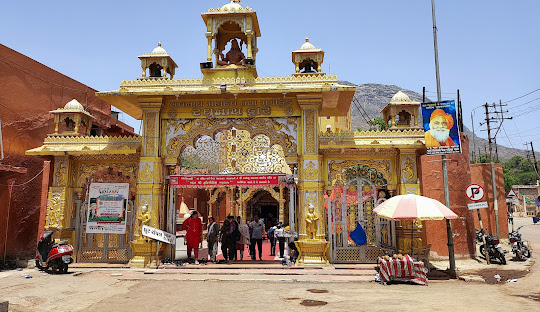
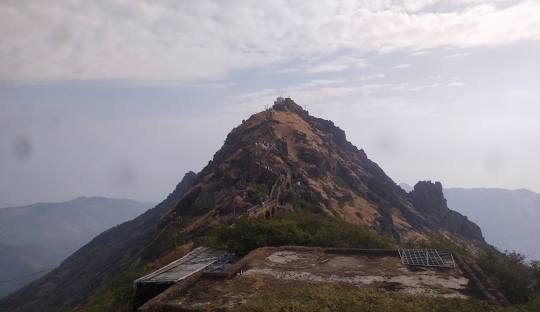
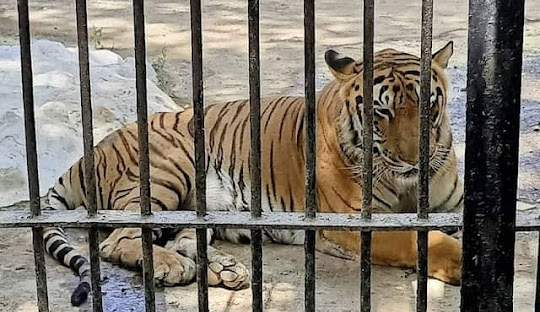
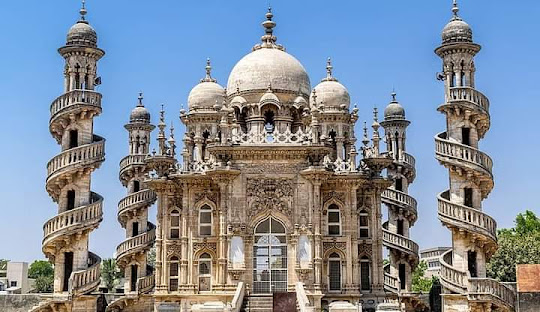
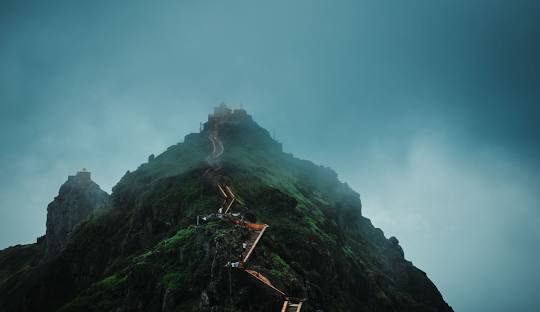
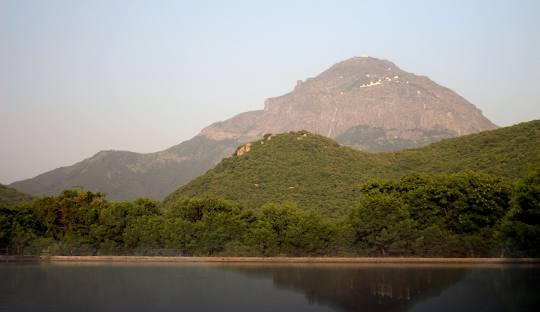
Locating the Majesty: Where Are the Girnar Hills?
Girnar Hills, also known as Revatak Parvata, is situated in the Junagadh District of Gujarat, India. The majestic range is located at coordinates 21.5179, 70.5503, placing it near the bustling city of Junagadh. Easily accessible by road, rail, and air, the hills serve as an important geographical and cultural landmark.
Key Location Details:
- State: Gujarat
- District: Junagadh
- Nearest City: Junagadh (acts as the gateway to the hills)
- Accessibility: With Rajkot airport just 103 km away, a well-connected railway network, and a robust road system, reaching Girnar Hills is convenient for all types of travelers.
The unique location of Girnar Hills, nestled amidst the lush expanses of the Gir Forest, makes it an ideal setting not only for religious retreats but also for those who wish to explore the natural beauty of western India. From ancient temples to historical edicts scattered at its base, the area echoes with stories of a bygone era.
A Visual Feast: Glimpses of Girnar Hills
Before your journey begins, prepare to immerse yourself in a world of visual splendor. Girnar Hills is renowned for its spectacular landscapes, ancient architecture, and panoramic vistas that captivate both the casual observer and the seasoned traveler.
What to Expect Visually:
- Temples in Stone and Faith: The intricate carvings on the ancient Jain temples, the vibrant colors of Hindu shrines, and the overall architectural marvel of these structures paint a picture of devotion in stone.
- Breathtaking Vistas: Whether you are standing at the base or reaching the summit after a challenging trek, expect sweeping landscapes with lush greenery, dramatic rock formations, and captivating natural light at sunrise and sunset.
- The Girnar Ropeway: A modern marvel, the ropeway offers a unique perspective of the hills and is a perfect opportunity for capturing unforgettable views from above.
- Local Life and Festivals: Candid photos of pilgrims, traditional festivities like the Bhavnath Mela, and the bustling bazaars of Junagadh add color and life to your travel diary.
As a writer or traveler preparing your blog or travel portfolio, be sure to include high-quality photographs that highlight these elements. These visuals not only support your narrative but also provide readers with an immersive glimpse into the heart of Girnar Hills.
Weathering the Heights: Understanding Girnar Hills Weather
Understanding the climate of Girnar Hills is crucial for planning your visit. The weather here is as dynamic as its terrain—ranging from sweltering summer heat to cool, crisp winter mornings that transform the landscape into a mystical wonderland.
Seasonal Breakdown:
- Winter (November to February): This is the ideal time to explore Girnar Hills. The temperatures are pleasantly cool, making it perfect for long treks and temple visits. The winter season also coincides with popular festivals such as the Bhavnath Mela, adding a cultural vibrancy to the experience.
- Summer (March to June): Summers can be challenging due to high temperatures that can reach up to 38–40°C. For those planning to trek, starting early in the morning or choosing to ride the ropeway are advisable options to beat the heat.
- Monsoon (June to September): While the monsoon may render certain parts slippery, the rains bring lush greenery to the landscape, creating a refreshing and vibrant atmosphere. However, trekking during heavy rain should be approached with caution.
- Best Time to Visit: Overall, the months from November to February provide the most comfortable weather conditions for visitors. During these months, the mild climate complements both active exploration and leisurely sightseeing.
It is always wise to check local weather forecasts before your trip. Websites and apps dedicated to weather updates can provide real-time information, ensuring that you are well-prepared for the climatic nuances of Girnar Hills.
Ascending with Ease: The Girnar Hills Ropeway
For those who prefer convenience or may not be able to commit to the physically demanding trek, the Girnar Ropeway offers a fantastic alternative. This impressive facility is designed to transport visitors quickly and safely to some of the key attractions, most notably the Ambika Temple.
Ropeway Highlights:
- Operational Timings: The ropeway operates daily from 7:00 AM to 6:00 PM. During the peak tourist months, additional support and booking options ensure a smooth experience.
- Experience: Enjoy a short, roughly 10-minute ride that offers awe-inspiring aerial views of the hills and the surrounding Gir Forest. The ride provides a contrasting perspective—from the bustling base to the serene heights above.
- Practical Details: Tickets can be easily booked online or through local tourist offices. If you prefer a more personal experience, contact details are available (for instance, the toll-free number 1800-202-4050 or via email at customercare@ushabreco.com, with operational hours between 9:30 AM and 6:00 PM).
The Girnar Ropeway not only adds convenience to your travel itinerary but also enriches your journey with a scenic ride that encapsulates the natural grandeur of the region. Whether you are short on time or in search of a less strenuous way to take in the views, the ropeway is a highly recommended option.
Famed for Faith and Flora: What Is Girnar Hills Famous For?
Girnar Hills is celebrated for its diverse array of attractions that cater to spiritual seekers, history buffs, nature lovers, and adventure enthusiasts alike. This section explores the multifaceted allure of this sacred peak.
Spiritual Significance
At the heart of Girnar Hills lies its unparalleled spiritual heritage. The mountain has long been revered by both Jain and Hindu communities, each attributing profound religious significance to its various sites.
Jain Temples
- Temple of Neminath: This ancient temple, dedicated to the 22nd Tirthankara, stands as a symbol of spiritual enlightenment for Jains. According to local lore, Lord Neminath attained nirvana here—a sacred moment celebrated by millions of pilgrims.
- Other Jain Shrines: Beyond the famed temple of Neminath, there are several other notable Jain sites, including the Triple Temple of Mallinath and several smaller shrines dedicated to revered figures. These temples, with their detailed carvings and historical significance, offer a window into centuries-old traditions and rituals.
Hindu Temples
- Ambika and Amba Mata Temples: Located on different peaks of Girnar, these temples attract devotees seeking blessings for new beginnings, marriage, and spiritual growth.
- Dattatreya and Gorakhnath Temples: The summit of Girnar also hosts temples dedicated to Hindu deities such as Dattatreya and the revered sage Gorakhnath. These sites not only serve as places of worship but are also steeped in local legends and mythology, often enveloped in legal and cultural disputes concerning their historical authenticity.
- Overall Sacred Atmosphere: The co-existence of Jain and Hindu temples in one location is a testament to the syncretic traditions of India. Walking through the ancient pathways, visitors can feel an aura of tranquility and reverence that is palpable in every stone and sculpture.
Natural Beauty & Trekking
- 10,000 Steps to the Summit: For adventure enthusiasts, the most iconic experience is the arduous trek that involves climbing approximately 10,000 stone steps. This journey, although physically demanding, rewards you with breathtaking vistas and a profound sense of accomplishment.
- Panoramic Views: As you ascend, every step unveils a new perspective—lush forests, sweeping vistas of Junagadh, and the sprawling Gir Forest. Morning treks, in particular, are unforgettable as the sky transforms with vibrant hues during sunrise.
- Trekking Alternatives: For those who may struggle with the physical challenge, options such as the ropeway or locally available dholis (porter-carried chairs) offer practical alternatives while still allowing you to experience the majesty of the peak.
Junagadh Kesar Mangoes
A lesser-known but delightful aspect of Girnar Hills is its connection to Junagadh’s famed Kesar Mangoes. These mangoes are celebrated for their unique taste, aroma, and vibrant color.
- Local Agricultural Heritage: The fertile lands around Junagadh make it an ideal place for growing these exceptional fruits. Whether enjoyed fresh or as part of local cuisine, Kesar Mangoes are a treat for the senses and represent an intrinsic part of the region’s cultural and culinary traditions.
- Seasonal Delight: The mango season adds an extra layer of charm to your visit. Travelers are encouraged to sample the mangoes from local markets—an authentic experience that blends nature’s bounty with regional heritage.
Together, the spiritual ambiance, natural beauty, and local delicacies make Girnar Hills a holistic destination where faith, adventure, and gastronomy coexist in perfect harmony.
Planning Your Pilgrimage and Adventure: Essential Information for Visitors
Preparing for a journey to Girnar Hills involves more than just booking a ticket—it requires careful planning to ensure a safe, respectful, and enjoyable experience. Below is a detailed guide covering everything you need to know before embarking on your adventure.
How to Reach Girnar Hills
By Air:
The nearest airport is in Rajkot, which is approximately 103 km away from Junagadh. Regular flights connect Rajkot to major cities across India, making it a convenient entry point for air travelers.
By Train:
Junagadh is well-connected via the Western Railway network. Both express and local trains serve this route, with the city lying on the Ahmedabad-Veraval line. This connectivity ensures that travelers can conveniently reach the base of Girnar Hills.
By Road:
The road network in Gujarat is robust, with national and state highways linking Junagadh to major cities and towns. Visitors can opt for state transport buses or private taxi services. Once in Junagadh, the journey continues with a short autorickshaw ride (approximately ₹100) to Girnar Taleti, the base from where trekking or the ropeway begins.
Accommodation Options
Visitors to Girnar Hills have a variety of accommodation choices based on their preferences and budget:
- Hotels in Junagadh: A range of hotels and guesthouses are available in Junagadh, offering comfortable stays for travelers looking to rest before or after a day of exploration.
- Dharamshalas and Religious Lodgings: For those on a pilgrimage, traditional dharamshalas provide simple, affordable lodging where you can experience local culture and hospitality.
- Resort Options: Some resorts near Girnar offer a blend of modern amenities and traditional charm, ideal for a relaxing retreat after a strenuous trek.
What to Wear and Carry
When planning your trip to Girnar Hills, consider these practical tips to enhance your comfort and safety:
- Footwear: Opt for sturdy, comfortable trekking shoes with good grip to navigate the stone steps and sometimes slippery paths.
- Clothing: Wear light, breathable clothing in summer but carry a warm layer if you plan on trekking during the early morning hours or during winter months.
- Essentials: Carry a refillable water bottle, snacks, a hat, sunglasses, sunscreen, and a light backpack. It’s also advisable to have a rain cover for your belongings during the monsoon.
- Additional Items: A long wooden stick is recommended by locals for extra support during the trek and as a precautionary measure in the wild surroundings of the Gir Forest.
Local Culture and Etiquette
Girnar Hills is not just a destination—it’s a living museum of cultural and spiritual heritage. Respect the local customs:
- Dress Modestly: When visiting temples or dharamshalas, ensure that you dress modestly. This shows respect for the sacred spaces and local traditions.
- Photography Etiquette: While the landscapes and the exteriors of the temples are worth capturing, remember that photography is often restricted within temple premises.
- Interaction: Engage politely with local guides and residents. Their insights into the history and traditions of Girnar Hills can greatly enrich your experience.
Food Options
Junagadh and its surroundings offer a delightful array of Gujarati cuisine:
- Street Food and Local Delicacies: Savor traditional snacks and dishes sold by local vendors. Whether it’s savory snacks or sweet treats, the local cuisine is a treat for your taste buds.
- Restaurant Options: From modest local eateries to well-established restaurants, you can enjoy a range of meals that highlight the best of Gujarati flavors.
Transportation on the Hill
For those who do not wish to engage in a strenuous trek, consider the following alternatives:
- Ropeway: An excellent option to scale the heights quickly.
- Dholis: These porter-carried chairs are available for a fee—approximately ₹4000 for average weights and ₹4500 for heavier individuals.
- Cable Car (Future Prospect): Plans for a modern cable car are in progress to further ease the ascent in the near future.
Quick Facts: A Table for On-the-Go Reference
| Feature | Details |
|---|---|
| Location | Gujarat, India (Junagadh District) |
| State | Gujarat |
| Nearest City | Junagadh |
| Famous For | Jain & Hindu Pilgrimage, Scenic Beauty, Trekking, Kesar Mangoes |
| Key Attractions | Jain Temples (Neminath, Mallinath), Hindu Temples (Ambika, Amba Mata, Dattatreya, Gorakhnath), Ashoka Rock Edicts, Damodar Kund |
| Best Time to Visit | November to February (Ideal weather, festival season) |
| Ropeway Availability | Yes—Operates from 7:00 AM to 6:00 PM; Ticket details available via online booking or local tourist services. |
| Famous Mango | Kesar Mango (A local delicacy celebrated for its taste and aroma) |
| Transportation Options | Accessible by air (Rajkot Airport), train (via Junagadh station), and road (buses, taxis, autorickshaws) |
Frequently asked questions and answers to help with your search intent regarding Girnar Hills:
Q1: Where are the Girnar Hills located, and what is their significance?
A1: Girnar Hills, also known as Revatak Parvata, are situated in Junagadh, Gujarat, India, at coordinates 21.5179, 70.5503. This ancient mountain range is considered older than the Himalayas. It holds immense spiritual significance for both Jains and Hindus. For Jains, it is believed to be the Nirvana bhumi of Lord Neminath, the 22nd Tirthankara, where he attained omniscience and later nirvana. For Hindus, it is a sacred site associated with various deities and sages, including the highest peak in Gujarat named after Gorakhnath. The hills are also significant historically, with the Ashoka Rock Edicts located at their base providing insights into the region’s ancient past.
Q2: When is the best time to visit Girnar Hills, and are there any notable festivals during this period?
A2: The ideal time to visit Girnar Hills is between November and February. During these months, the weather is pleasant, making trekking and exploration comfortable. This period also coincides with key festivals that enhance the cultural experience. Notable festivals include the Bhavnath Mela, held over five days in the month of Magha (January–February) at the Bhavnath Mahadev Temple at Girnar Taleti, featuring folk music, dancing, and gatherings of Saivite holy men. The Girnar Parikrama, another significant event in October/November, involves devotees circumambulating the sacred mountain as an act of devotion.
Q3: What are the main attractions and activities at Girnar Hills?
A3: Girnar Hills offers a diverse range of attractions and activities.
- Pilgrims and tourists can visit numerous temples, including the 12th-century Temple of Neminath (Jain), the Triple Temple of Mallinath, and Hindu temples like Amba Mata, and Gorakhnath (at Gujarat’s highest peak).
- The Dattatraya Temple on a steep peak and the Kalika Temple atop the final outcrop are also significant.
- Historical sites include the Ashoka Rock Edicts at the foothills and the sacred Damodar Kund lake.
- Activities include trekking approximately 10,000 steps to the summit, or using the Girnar Ropeway for a quicker ascent to the Ambika Temple.
- Festivals like Bhavnath Mela and Girnar Parikrama offer unique cultural immersion.
- Other attractions include Damodar Kund, Navghan Kuvo, Adi Kadi Vav, Jama Masjid, Uparkot Fort, and Buddhist Caves in the vicinity.
Q4: How can one reach Girnar Hills, and are there different transportation options for ascending the mountain?
A4: Girnar Hills are easily accessible by air, train, and road.
- By air, the nearest airport is Rajkot, about 103 km away, connecting to various parts of Gujarat and the country.
- By train, Junagadh has a railway station on the Western Railway network, with good connectivity, especially from Rajkot.
- By road, the region is linked by a robust road network, including National and State Highways, with buses and private options available to Junagadh. From Junagadh, one can take an autorickshaw to Girnar Taleti (the base) for around ₹100.
For ascending the mountain, the traditional method is trekking approximately 10,000 stone steps. Alternatively, the Girnar Ropeway provides a 10-minute ride to the Ambika Temple. Dholis (porter-carried chairs) are also available for those unable to trek, costing between ₹4000 and ₹4500 depending on weight. A cable car is also under construction for future ease of access.
Q5: What should visitors consider in terms of trekking Girnar Hills, including difficulty and essential items to carry?
A5: The Girnar trek is classified as medium difficulty and typically takes around 8 hours for the complete up and down journey, involving approximately 10,000 steps. It is strongly recommended to start the climb very early in the morning, ideally around midnight or dawn, to avoid the heat, especially during summer months.
Essential items to carry include:
- Comfortable trekking shoes with good grip
- Sufficient water
- Light food and snacks
- A long wooden stick for support and protection
- A backpack with a rain cover
- Sun protection (cap, sunglasses, sunscreen)
- Appropriate clothing (including layers for varying temperatures)
- Any personal medications and a basic first-aid kit
- Government-approved ID with photocopies
Refreshment stalls are available along the trail, but it’s wise to be prepared.
Q6: Are there any controversies or unique aspects related to the religious sites on Girnar Hills?
A6: Girnar Hills is notable for the coexistence of Jain and Hindu temples, reflecting India’s syncretic traditions. However, there have been some controversies, such as the legal dispute over the Dattatraya shrine located near what are believed to be Lord Neminath’s footprints. Cases have been pending in the Gujarat High Court regarding alleged illegal constructions and canopy reconstructions in this area, highlighting the complex interplay of religious claims and historical interpretations on the mountain.
Q7: What practical tips should travellers keep in mind when planning a visit to Girnar Hills?
A7: Travellers should keep the following practical tips in mind:
- Plan your visit between November and February for the best weather.
- If trekking, start at dawn to avoid heat and crowds.
- Carry sufficient water and snacks, and wear comfortable trekking shoes.
- Dress modestly, especially when visiting temples, and respect local customs.
- Photography is generally permitted on the trail but often restricted inside temples.
- Check the operating hours and booking procedures for the Girnar Ropeway in advance. Contact details: Toll Free No. 1800-202-4050, email: customercare@ushabreco.com (9:30 AM to 6:00 PM).
- Consider hiring a local guide for a more informed experience. Registered guides include Miteshkumar Dasrathbhai Dayani (9427606468), Navjyot Vyas (8347916179), and Bhupendra Vasant Oza (8320782934).
- If trekking is challenging, explore the option of using dholis.
Q8: Besides the temples and trekking, are there any other attractions or activities in the vicinity of Girnar Hills that visitors might find interesting?
A8: Yes, Junagadh and its surroundings offer several other attractions worth exploring. These include:
- Damodar Kund: A sacred lake at the foothills.
- Ashokan Edicts: Historical inscriptions from the 3rd century BCE.
- Navghan Kuvo: A historical step-well.
- Adi Kadi Vav: Another historical step-well.
- Jama Masjid: Reflecting Islamic heritage.
- Uparkot Fort: Believed to have been built in 319 BC.
- Buddhist Caves: Dating back to the 2nd century AD.
- Tombs of the Babi Kings: Reflecting the region’s royal history.
- Jatashankar Waterfall.
- Willingdon Dam.
- Sakkarbaaug Zoo.
These sites provide a broader context of the region’s rich heritage and can complement a visit to Girnar Hills.
Conclusion: Experience the Mystical Majesty of Girnar
Girnar Hills is more than a destination—it is an immersive journey into the heart of Gujarat’s spiritual and natural legacy. Whether you are drawn by the promise of ancient temples, the challenge of a 10,000-step trek, or the allure of breathtaking landscapes and vibrant local culture, this sacred mountain offers a mosaic of experiences that linger in memory long after you return home.
From the moment you arrive near Junagadh and set your eyes on the towering peaks, you will feel the rich tapestry of history and spirituality. The ancient Jain and Hindu temples stand as silent witnesses to centuries of devotion and ritual, while the natural beauty of the Gir Forest and the clear mountain air invigorate your spirit. Whether you choose to ascend by the thrilling ropeway or dare the traditional trek, every moment on Girnar Hills is a celebration of life, history, and nature.
As the sun rises over the rugged hills and illuminates the temples with its golden hue, you will understand why Girnar is revered not just as a geographical wonder, but as a timeless place of faith, adventure, and natural splendor. The journey is challenging but immensely rewarding—a reminder of the remarkable resilience of both nature and the human spirit.
So, pack your bags, prepare your camera, and set out on this unforgettable pilgrimage. Embrace the mystique, savor the spiritual energy, and let Girnar Hills transform your perspective on travel and heritage. We invite you to share your experiences and stories—whether through photography, blog posts, or conversations—as you contribute to the ongoing tapestry of this magnificent destination.
Plan your journey today and discover the magical blend of history, faith, and adventure that awaits on the ancient slopes of Girnar Hills. Your complete guide to Gujarat’s sacred peak is here—unveil the majesty, one step, one view, and one moment at a time.
Sources for this guide include detailed research documents and travel insights from official tourism information, historical records, and local travel blogs. For further details and bookings, you may visit local tourism websites or contact the dedicated guides and support services available on the ground.
With the practical tips, historical background, and comprehensive insights provided in this guide, your visit to Girnar Hills promises to be an enriching blend of cultural immersion, spiritual reflection, and exhilarating adventure.
Happy travels, and may your journey to Girnar Hills be as transformative as the destination itself!
For more articles and updates go to: https://xploreheaven.com/blogs-updates/
